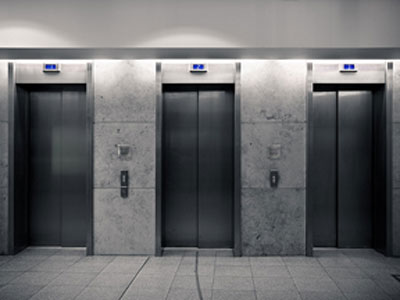How K-Tel Shaped My Music Listening Habits
On April 27, 2016, Phil Kives, the founder of K-Tel International, passed away at the age of 87. K-Tel was a household name back in the 1970s and 1980s, and if you grew up during those decades, then you probably bought (and may still own) some of their products, such as the Patti-Stacker and the Veg-O-Matic.

In addition to time-saving kitchen appliances, K-Tel also produced music compilation albums. When I was about eight years old, my parents bought me a copy of K-Tel’s Sound Explosion – 22 Original Hits, 22 Original Stars. This was a big deal to me because it was my first “grown-up” LP. Up until then, my music collection consisted entirely of children’s records. I wasn’t familiar with these Sound Explosion songs, but I was happy to be listening to the same music as my parents and their friends. A couple of years later, I acquired two more K-Tel albums: Disco Dynamite and Music Machine. With 22 songs on each album, this was a great way to start building my music collection. It was cheaper than buying all of the 45s, and took less time than recording the songs from the radio onto cassettes (which was usually an exercise in futility, since the songs were invariably interrupted by the disc jockeys).

I was content for a while… that is, until I bought a copy of Saturday Night Fever. Its version of Walter Murphy’s A Fifth of Beethoven was longer than the version on my K-Tel album. This seemed odd to me, since I just assumed that my K-Tel albums contained the complete songs. Of course being a kid, I had no idea how many songs an average LP contained, and I never wondered how Phil Kives was able to fit 22 songs onto two album sides. As I started listening to the radio more often I began to notice that other songs were also much longer than my K-Tel versions. I now realized what was going on, and I felt a profound sense of disappointment, and that I had been cheated. These weren’t complete songs at all – they were all heavily edited. Those K-Tel albums were the musical equivalent of a tasting menu, and (if you’ll forgive this tortured metaphor) one that left a decidedly bad taste in my mouth!
I now felt that my burgeoning music collection was a waste of money (OK, technically it was my parents’ money), since I didn’t even have the complete songs. Now I had to buy some of this music over again, in order to hear the complete songs and experience them properly. While this may not seem like a big deal to you, as a pre-teen with limited financial resources, it was a significant setback for me.
My second music-acquisition setback occurred during my teenage years. I was happily building my music collection by listening to AM radio stations (1050 CHUM, 680 CFTR and 1150 CKOC) and buying the 45 RPM singles of the songs that I liked. When I started listening to FM radio stations, it happened again. Unknown to me at the time, AM radio stations usually played the edited “single” versions of Top-40 hits, while FM stations played the full-length album versions. Once again, I felt ripped-off. However, upgrading this time was going to be a challenge. Those 45 RPM singles (at the time) cost $1.14 at Sam The Record Man, but albums – most of which contained only one or two songs that I liked – cost $5.99 or $6.99, which was quite an expense for a high school student who didn’t have a job.
In hindsight, one good thing did emerge in the midst of this musical and financial angst. I started to consider songs not merely as entertainment, but as a form of art. I also began to view disc jockeys and the music industry with contempt, for butchering this art in their misguided belief that consumers could only enjoy songs that were packaged in small, bite-sized, three-minute pieces. This was utter nonsense; if I could sit through an entire classical symphony or even a four-movement concerto, then I could certainly digest a four or five-minute pop song.
As far as I was concerned, this wanton butchering of of pop music was blasphemous. Imagine that you are an art gallery curator, and that you’ve recently acquired an invaluable collection of well-known paintings. Your gallery is holding an exhibition to show off your new collection, and you want to give the public their money’s worth by displaying 100 of these paintings. Unfortunately, when the collection arrives, you realize that the canvases are larger than you thought, and that you won’t be able to fit the entire collection in the allocated space. What would you do? Display fewer paintings, or buy a bunch of smaller frames and then take a pair of scissors to each painting to make them fit into these smaller frames? This sums up the way I felt about the people who created the edited “single” versions of pop songs, as well as the music editors at K-Tel Records.

You obviously know what this painting is – enough of the canvas is visible to tell you that much – but you’re not experiencing this piece of art as completely as you should.
Since my teenage years, I’ve become almost obsessive about building a proper music library. I stopped buying 45 RPM singles, and I now ensure that songs I do buy are always the full-length versions. A song is a musician’s piece of art, and it should be listened to just as it was written. Anything else is incomplete and diminishes the experience. This philosophy has also led to a few joyous discoveries over the years. From time to time, I discovered that the album versions of some songs contained not only an additional verse, but also an extended opening instrumental (Jet Airliner, Driver’s Seat, I Need A Lover). Occasionally I would discover huge swaths of new material (Come Sail Away, Love Is Like Oxygen, Call Me, Magic Man). The full-length versions of Santa Esmerelda’s Don’t Let Me Be Misunderstood and Rapper’s Delight still amaze me – they both clock in around 15 minutes, with almost no repetition!
You might assume that I love the 12-inch maxi singles, disco remixes and assorted extended versions of songs. Well, yes and no. I like them, but only if they contain additional, fresh material. Adding 16 bars of a pulsating drumbeat does nothing to enhance the song; it’s just a cheap (and lazy) way to sell additional copies of the record. I also have no use for YouTube remixes that simply copy and paste the existing musical material – they also add nothing to the experience. I’m looking for new material that wasn’t present in the original recording. That’s why even now, decades later, I’m still pleasantly surprised with some of my musical discoveries. Thirty years after it was released, I heard – for the first time – the extended rap in the song Miss You, by The Rolling Stones (from 1:50 – 2:37). I had never heard this version on the radio, and it isn’t included on their Some Girls LP.
When LPs and CDs are remastered, there are often additional tracks added to the original playlist. These can be outtakes, early versions or alternate versions of the original songs. I love listening to these because they give me some insight into the creative process of the musicians and lyricists. I like experiencing their musical ideas that were considered, but eventually ended up on the proverbial “cutting room floor”. In this early version of American Woman, Burton Cummings sings, rather than shouts, and this changes the entire character of the piece: it’s entirely devoid of anger, and sounds almost placid. Another excellent example is alternate version of Who Are You, by The Who, which contains a verse that wasn’t included in the version of the song. Evil Woman by The Electric Light Orchestra is another notable example – this alternate version contains an extra verse plus a short orchestral intro.

Over the decades, I’ve become philosophical as I reminisce about my music library. I don’t harbour any ill will toward K-Tel or its founder Phil Kives. Yes, I did have to spend more money on my music collection and buy many songs more than once, but I’m glad that I started my musical journey with a K-Tel record. I now have more of an appreciation for music as as art form, and less tolerance for mass-produced, butchered versions of songs. I believe that the quality of the pop and rock sections of my music collection is higher because of this experience. Indirectly, Kives taught me that songs should be experienced in their entirety, just as the artist composed it, and not how the record labels decide to repackage it.
I still have my three K-Tel compilations albums, tucked away in my vinyl collection. Although it’s been decades since I’ve played them, I can’t bear to get rid of them. They were among my first LPs, and were responsible for making me a more discriminating music lover, and less likely to accept the edited and watered-down sonic pablum that’s still being fed to the masses.
.
.




 Last summer during a neighbourhood walk, I approached a railway crossing that had its lights flashing, bells ringing, and guard rail down. I was standing there with five other people: two boys who looked to be about nine or ten, and three middle-aged women. The train was only a couple of hundred feet away, stopped at the adjacent station. This intersection’s proximity to the station meant that the guard rail is usually down while the passengers disembark. After 90 seconds or so, the three middle-aged women decided that they were tired of waiting and crossed the tracks together. About 15 seconds afterwards, the two boys decided to do the same. I was disappointed to see the boys cross the tracks, but not surprised. I didn’t say anything at the time, but looking back I wonder if I should have given these women a stern lecture on the fiduciary responsibilities of being a responsible adult. There were three tracks at this crossing, and while a ground-level observer would assume that the signals were triggered by the train stopped at the station, there could have been another train travelling at high speed (and obscured by the stopped train) on one of the other tracks.
Last summer during a neighbourhood walk, I approached a railway crossing that had its lights flashing, bells ringing, and guard rail down. I was standing there with five other people: two boys who looked to be about nine or ten, and three middle-aged women. The train was only a couple of hundred feet away, stopped at the adjacent station. This intersection’s proximity to the station meant that the guard rail is usually down while the passengers disembark. After 90 seconds or so, the three middle-aged women decided that they were tired of waiting and crossed the tracks together. About 15 seconds afterwards, the two boys decided to do the same. I was disappointed to see the boys cross the tracks, but not surprised. I didn’t say anything at the time, but looking back I wonder if I should have given these women a stern lecture on the fiduciary responsibilities of being a responsible adult. There were three tracks at this crossing, and while a ground-level observer would assume that the signals were triggered by the train stopped at the station, there could have been another train travelling at high speed (and obscured by the stopped train) on one of the other tracks. Some of you will find that being a role model is effortless (since you may already be one), but for others, it will involve a major shift in your philosophy of life and in your behaviour. Being an adult means taking on the fiduciary and continual duty of being a good behavioural example to others. Not everyone has the awareness, self-discipline, motivation or desire to do this. However, if you feel up to the task, then read on…
Some of you will find that being a role model is effortless (since you may already be one), but for others, it will involve a major shift in your philosophy of life and in your behaviour. Being an adult means taking on the fiduciary and continual duty of being a good behavioural example to others. Not everyone has the awareness, self-discipline, motivation or desire to do this. However, if you feel up to the task, then read on… Astrological Sign: Despite an abundance of psychics in large cities, and of horoscopes in most major newspapers, nobody (other than members of 1970s soul group,
Astrological Sign: Despite an abundance of psychics in large cities, and of horoscopes in most major newspapers, nobody (other than members of 1970s soul group,  Last year, my sister-in-law, who is American, joined us for a family dinner here in Canada. During the meal the conversation turned to politics, and afterwards, she remarked on the civility of our discussion. We spoke freely about all political parties (both American and Canadian) and no one seemed offended. She said that a similar discussion among her friends in the States would quickly become polarized and probably heated. I replied “Well then, let me tell you about the differences between Canadian and American politics!”. Disclaimer: the following explanation is based solely on my personal observations (and the political views within my circle of friends) and does not represent all Canadians.
Last year, my sister-in-law, who is American, joined us for a family dinner here in Canada. During the meal the conversation turned to politics, and afterwards, she remarked on the civility of our discussion. We spoke freely about all political parties (both American and Canadian) and no one seemed offended. She said that a similar discussion among her friends in the States would quickly become polarized and probably heated. I replied “Well then, let me tell you about the differences between Canadian and American politics!”. Disclaimer: the following explanation is based solely on my personal observations (and the political views within my circle of friends) and does not represent all Canadians. Object-Oriented Programming (OOP) languages use a concept known as a class, which is similar to a blueprint. A class is used to create an object. Imagine a contractor building a house from a blueprint. The blueprint is the class, and the house itself is the object. Many houses can be created from the same set of blueprints, and similarly, many objects can be created from a single class. You can also think of a class as a genotype and an object as a phenotype. A class will contain one or more attributes (known as properties) that define each object.
Object-Oriented Programming (OOP) languages use a concept known as a class, which is similar to a blueprint. A class is used to create an object. Imagine a contractor building a house from a blueprint. The blueprint is the class, and the house itself is the object. Many houses can be created from the same set of blueprints, and similarly, many objects can be created from a single class. You can also think of a class as a genotype and an object as a phenotype. A class will contain one or more attributes (known as properties) that define each object. This simple programming language concept gives us a sneak preview of a Utopian society. In this world, we aren’t black or white, gay or straight, Republican or Democrat, religious or secular, or any other label that we can use to categorize each other. We are simply people with the same set of attributes, but with different values assigned to them. We’ve already started moving in this direction (perhaps without even realizing it) and I want us to continue. This is the way that I hope we will view and treat each other. If we can create a programming language that combines diversity and equality, and eschews categorization, then surely we can embrace this philosophy ourselves. A creation shouldn’t be more enlightened than its creator.
This simple programming language concept gives us a sneak preview of a Utopian society. In this world, we aren’t black or white, gay or straight, Republican or Democrat, religious or secular, or any other label that we can use to categorize each other. We are simply people with the same set of attributes, but with different values assigned to them. We’ve already started moving in this direction (perhaps without even realizing it) and I want us to continue. This is the way that I hope we will view and treat each other. If we can create a programming language that combines diversity and equality, and eschews categorization, then surely we can embrace this philosophy ourselves. A creation shouldn’t be more enlightened than its creator. In hindsight, I consider myself fortunate to have grown up during the late 1970s and early 1980s – the dawn of the personal computer era. When I was a teenager, I remember using a Commodore PET computer in my Data Processing classes at school, This machine was considered state-of-the-art compared to what we were using before: a Wang minicomputer that was programmed using punched cards, and was shared among three high schools. The following year, my parents bought a Commodore-64 computer for the family and I started to learn the BASIC programming language.
In hindsight, I consider myself fortunate to have grown up during the late 1970s and early 1980s – the dawn of the personal computer era. When I was a teenager, I remember using a Commodore PET computer in my Data Processing classes at school, This machine was considered state-of-the-art compared to what we were using before: a Wang minicomputer that was programmed using punched cards, and was shared among three high schools. The following year, my parents bought a Commodore-64 computer for the family and I started to learn the BASIC programming language.
 Traffic lights and pedestrian crossing lights are fairly easy to understand. While standing on the corner, you press the button, and after a few seconds the red hand will start flashing. It flashes 10 times, and then remains solid for five seconds. At this point the traffic light turns yellow and then red. When the other traffic light turns green, the corresponding pedestrian light changes to a white persona walking, and then it’s safe to cross.
Traffic lights and pedestrian crossing lights are fairly easy to understand. While standing on the corner, you press the button, and after a few seconds the red hand will start flashing. It flashes 10 times, and then remains solid for five seconds. At this point the traffic light turns yellow and then red. When the other traffic light turns green, the corresponding pedestrian light changes to a white persona walking, and then it’s safe to cross. I have a confession to make. Years ago, whenever I was shopping and waiting in the checkout line, I would secretly make fun of some of the other shoppers. As you know, checkout lines are filled with impulse items – batteries, candy, gum, tabloid newspapers and other high-margin items that are never on sale. If the person in front of me picked up one of these items and placed in on the conveyor belt, I would think to myself “Look at you – you are so undisciplined! You just see something and you grab it. I am clearly a superior shopper because I have a list, from which I do not deviate. I know exactly what I want and how much it costs, and I am not tempted by the store’s amateurish attempts to make me spend more than I had planned. Unlike you, I am methodical, I stick to the task at hand, and I am not distracted by small shiny objects or celebrity gossip”.
I have a confession to make. Years ago, whenever I was shopping and waiting in the checkout line, I would secretly make fun of some of the other shoppers. As you know, checkout lines are filled with impulse items – batteries, candy, gum, tabloid newspapers and other high-margin items that are never on sale. If the person in front of me picked up one of these items and placed in on the conveyor belt, I would think to myself “Look at you – you are so undisciplined! You just see something and you grab it. I am clearly a superior shopper because I have a list, from which I do not deviate. I know exactly what I want and how much it costs, and I am not tempted by the store’s amateurish attempts to make me spend more than I had planned. Unlike you, I am methodical, I stick to the task at hand, and I am not distracted by small shiny objects or celebrity gossip”. In addition to carpe diem, another phrase that has entered the public consciousness recently is “the bucket list”. It refers to a list of things that we want to accomplish before we die, or to put it more colloquially, before we “kick the bucket”. The list could be mental, or you could actually write out your list and cross off the items as you accomplish them. Each person’s bucket list is unique. In 2007, a movie called
In addition to carpe diem, another phrase that has entered the public consciousness recently is “the bucket list”. It refers to a list of things that we want to accomplish before we die, or to put it more colloquially, before we “kick the bucket”. The list could be mental, or you could actually write out your list and cross off the items as you accomplish them. Each person’s bucket list is unique. In 2007, a movie called 

 If you want a carpe diem reminder, then read advertisements or watch commercials. Even if the items are on sale regularly, advertisers know intuitively how to appeal to our sense of urgency, through the use of phrases such as “act now”, “sale ends soon”, “limited-time offer”, “our biggest sale of the season” as well as the blatantly obvious and redundant “get yours now, because when they’re gone… they’re gone!”. Let’s put the same sense of urgency into our own lives. Do as much as you can, and don’t wait – do them now!
If you want a carpe diem reminder, then read advertisements or watch commercials. Even if the items are on sale regularly, advertisers know intuitively how to appeal to our sense of urgency, through the use of phrases such as “act now”, “sale ends soon”, “limited-time offer”, “our biggest sale of the season” as well as the blatantly obvious and redundant “get yours now, because when they’re gone… they’re gone!”. Let’s put the same sense of urgency into our own lives. Do as much as you can, and don’t wait – do them now!



